

 |
| Carbine with bayonet folded back |
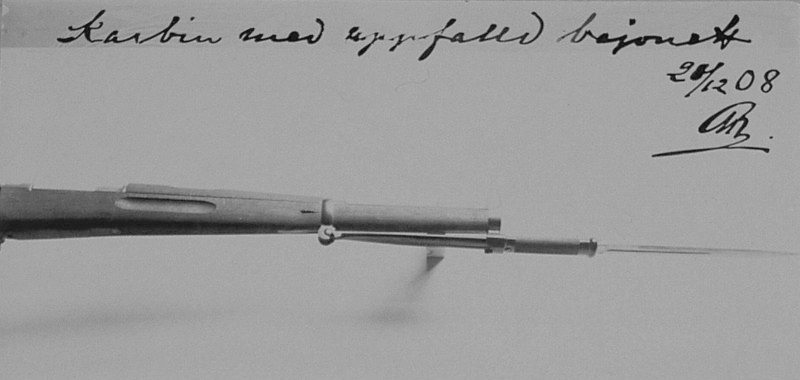 |
| Carbine with bayonet folded up and mounted |
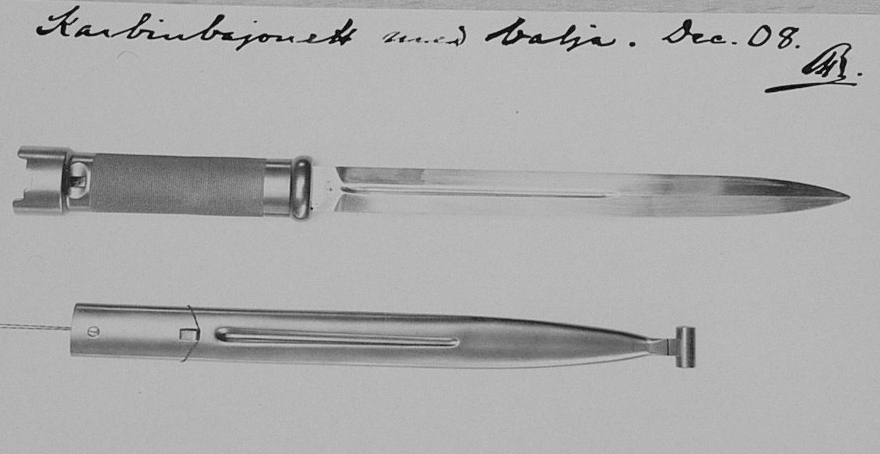 |
| Carbine bayonet with scabbard, double edged blade with fuller. . |
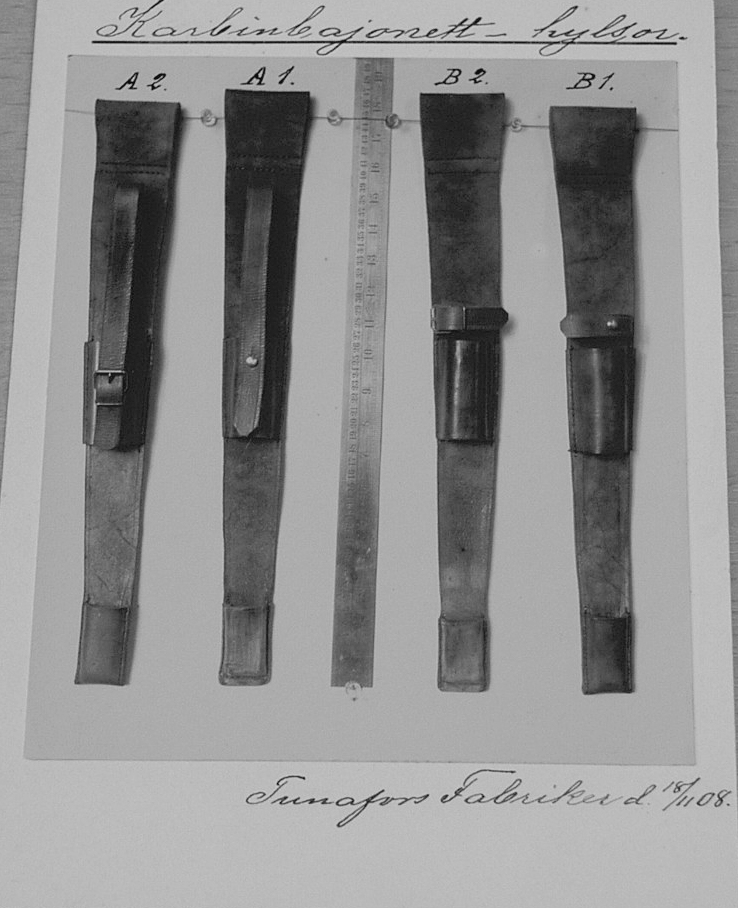 |
| Frogs for the carbine folding bayonet. |
| A | This
bayonet has a medium long blade, double edged with a fuller. The hilt is
made of steel, it is hollow and has a stud with a locking button. The scabbard looks like the rifle bayonet, but is longer. This bayonet could be delivered with a blade with or without fuller or with a short blade, of the same length as the rifle bayonet. |
| B | Variation B has a medium long blade, double edged but without fuller. The scabbard looks like variation A but it has no groove. The hilt is of same type as A. The blade can also be exchanged here. |
| C | This is actually one of the earlier carbine bayonet proposals. The hilt look like the rifle bayonet m/1896 but has a stud with a locking button. The blade and scabbard is the same at for the rifle bayonet m/1896. |
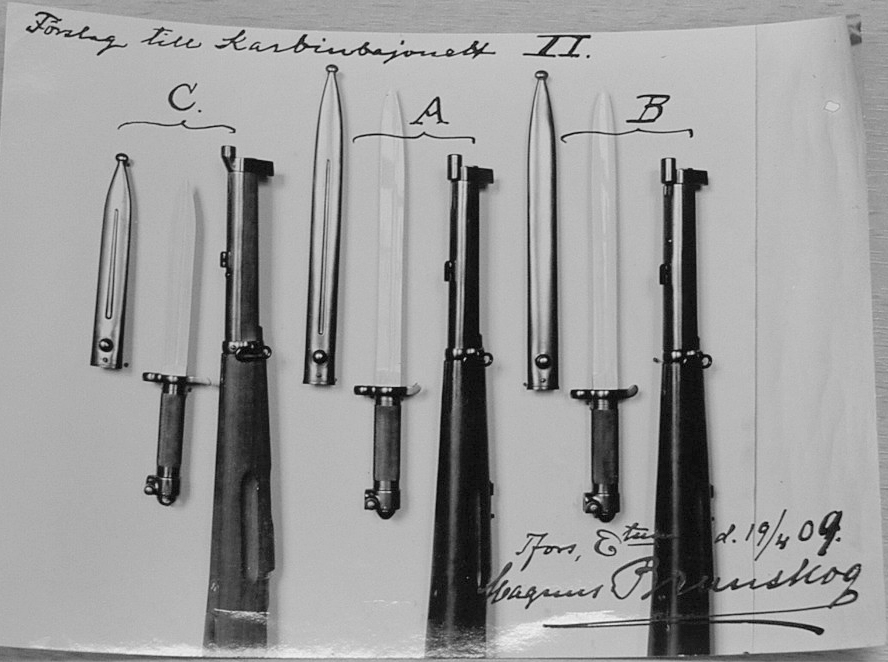 |
| Project models, model II, type A, B and C |
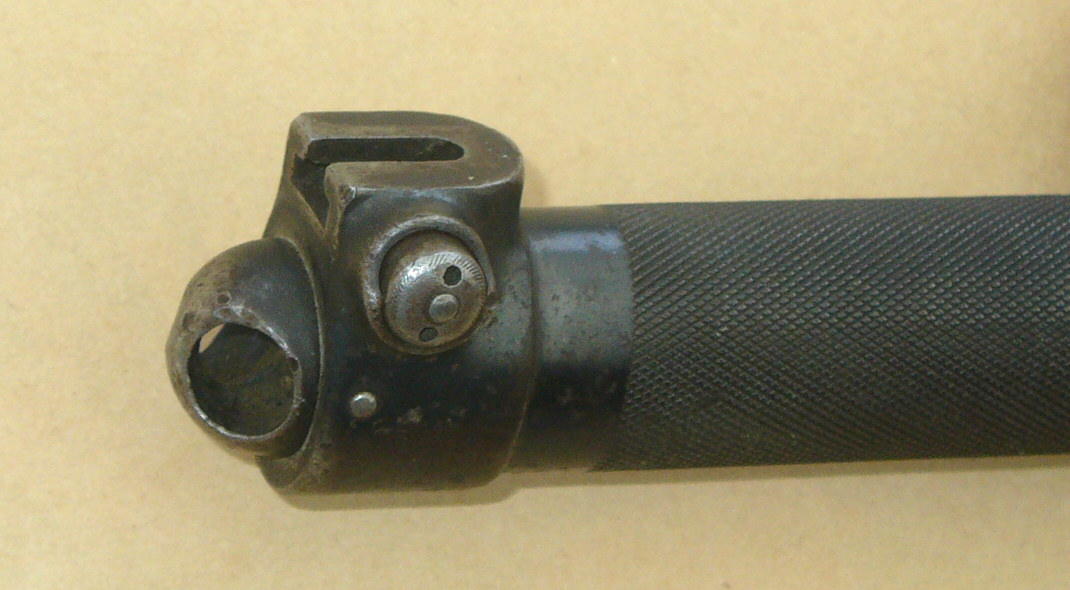 |
| Locking stud and portepee holder. |
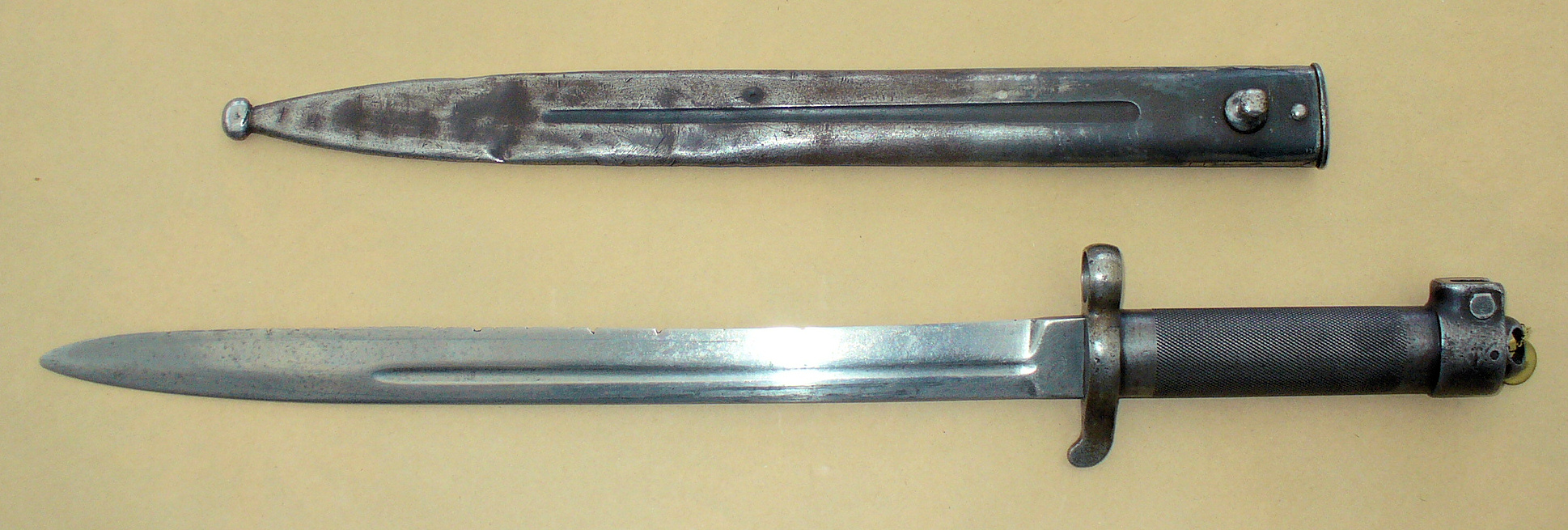 |  |
| The Carbin bayonet intended for the Cavalry. Medium length blade. | |
 |
 |
| The Carbin bayonet intended for the Navy. Long blade. |
| Dimensions | Overall length | Blade length | Muzzle ring diameter |
| Medium Length blade | 475 mm | 331 mm | 15,5 mm |
| Long blade | 645 mm | 503 mm | 15,5 mm |
| # | Reference |
| 1 | "Bayonets/Bajonetter/Bajonette"" Björn Schöön 1986. |
| 2 | Eskilstuna Företagsarkiv |
| 3 | "Sablar också", streck och punkt, 2004 |
| 4 | "Samlarnytt", Nr 1 1972 |
| 5 | Patent No 21677, 3 juni 1905 |
| 6 | Patent No 24227, 4 maj 1906 |